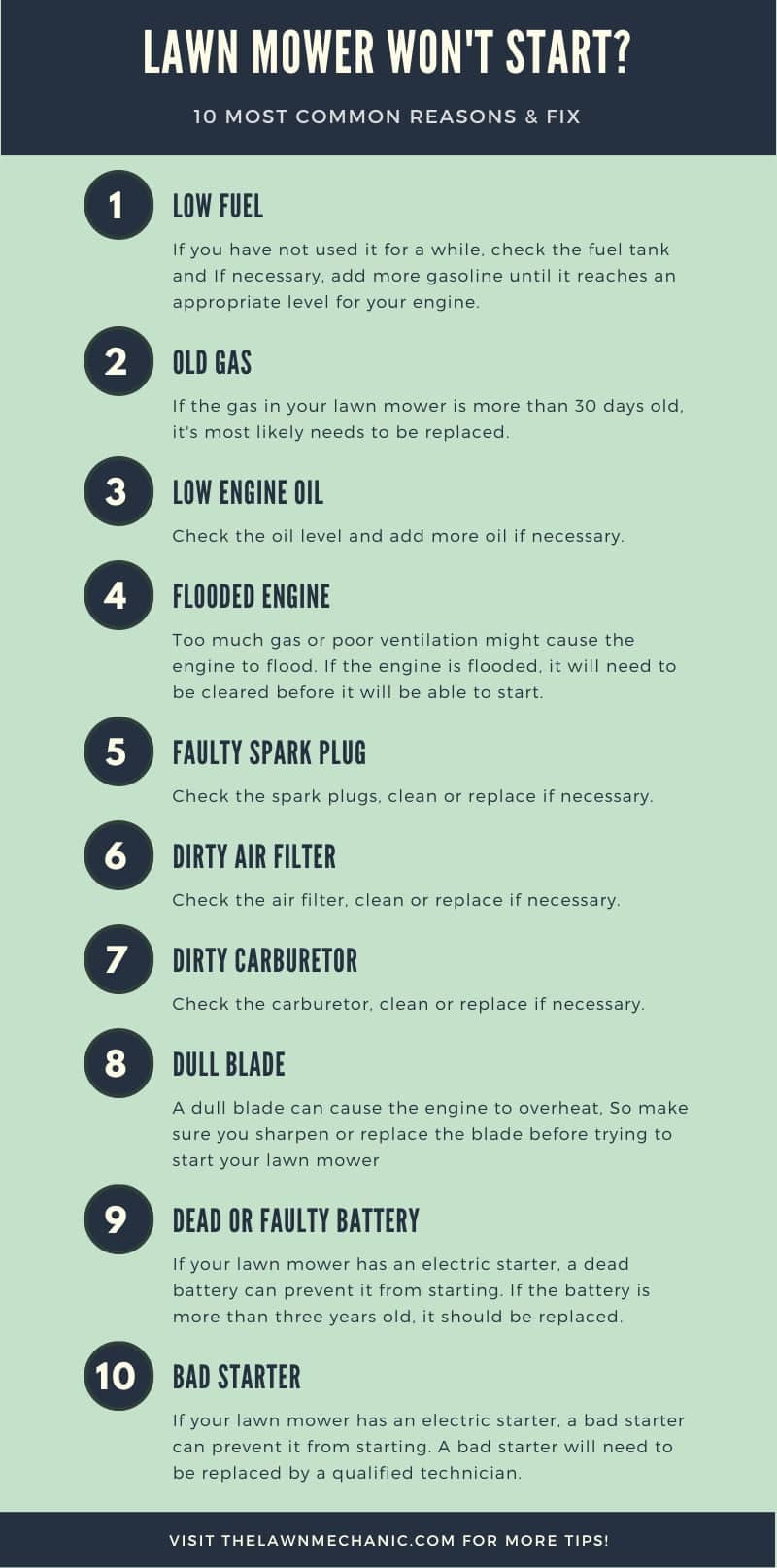A malfunctioning lawn mower can be a frustrating problem to deal with. If you have a Craftsman lawn mower that won’t start, there are several potential causes you should investigate before calling for help. Let’s take a look at some of the common reasons why your Craftsman lawn mower may not be starting up.
Quick Links
Common Reasons Craftsman Lawn Mower Won’t Start
Engine Oil Issues
Engines rely on oil to keep them lubricated and running smoothly, and if the oil level gets too low, the engine can seize up. To check the oil level, remove the dipstick from the oil filler neck and wipe it off with a clean cloth. Then insert the dipstick back into the neck and pull it out again. The oil level should be between the “full” and “add” marks on the dipstick. If it’s below the “add” mark, you’ll need to add more oil before starting the mower. And if it’s empty, you’ll need to fill it up before starting the mower. So if your mower isn’t starting, checking the engine oil is a good place to start.
Fuel Issues
Over time, gasoline can break down and become contaminated with water or other debris. This can cause the engine to misfire or refuse to start altogether. To prevent this problem, always store your fuel in a clean, airtight container. Be sure to add a fuel stabilizer to gas cans that will not be used immediately. And before adding fuel to your mower, always check the expiration date on the gas can. If the gas is more than a few months old, it’s best to discard it and start fresh.
Another possibility is that the engine may be flooded. This can happen if too much fuel is added to the tank, or if the mower is left unused for a long period of time. If this is the case, you’ll need to drain the fuel tank and clean out the carburetor before trying to start the mower again.
Battery Issues
If your Craftsman mower won’t start due to a battery issue, the first thing to check is the battery itself. Make sure that the terminals are clean and that the connections are tight. If the battery looks old or damaged, it may need to be replaced. Another possibility is that the starter solenoid is not working properly. This can often be diagnosed by listening for a clicking sound when you turn the key. If you don’t hear anything, the solenoid may need to be replaced.
Malfunctioning Carburetor
Another potential cause of a malfunctioning Craftsman lawnmower is a carburetor issue. The carburetor may need to be cleaned or replaced if it is clogged or otherwise damaged. If this is causing your problems, it would likely require assistance from someone with experience in engine repair work in order to fix it properly.
Bad Spark Plug
The spark plug ignites the fuel in the engine, so if it’s not working properly on your Craftsman mower, the engine won’t start. There are many reasons why a spark plug may stop working, such as fouling or corrosion. To fix this problem, the spark plug needs to be replaced. Sometimes, changing the spark plug may not be enough and the entire ignition system may need to be replaced.
Dirty Air Filter
The air filter keeps dirt and debris from entering the engine, and over time it can become clogged with dust and other particles. When this happens, the engine can’t get enough air, and as a result, it won’t start. To clean the air filter, first remove it from the mower. Then, use a garden hose to rinse away any dirt or debris. Once the filter is clean, put it back in place and try starting the mower again.
Infographic On Troubleshooting Your Craftsman Mower That Won’t Start
In an earlier blog post, we discussed why a lawn mower might not start, regardless of the make. Here’s an infographic from that blog post demonstrating the most common reasons for your mower not starting up. This might be helpful with troubleshooting your Craftsman mower.

Craftsman Lawn Mower Troubleshooting Video
Conclusion
No one wants their lawnmower to stop working when they need it most—but luckily, troubleshooting when your Craftsman lawnmower won’t start doesn’t have to be too difficult! Fuel issues, battery problems and faulty carburetors are all common culprits when it comes to malfunctioning machines of this type. By taking some time to investigate these causes yourself before seeking professional help, you’ll save both time and money in getting your machine up and running again!

